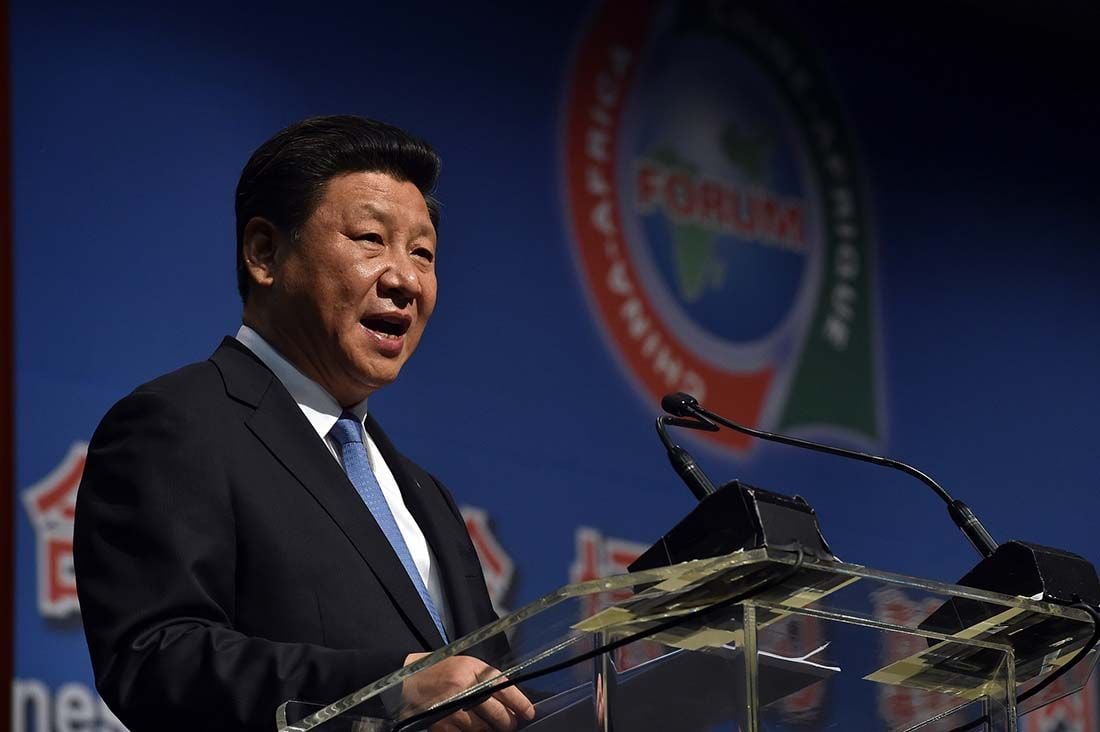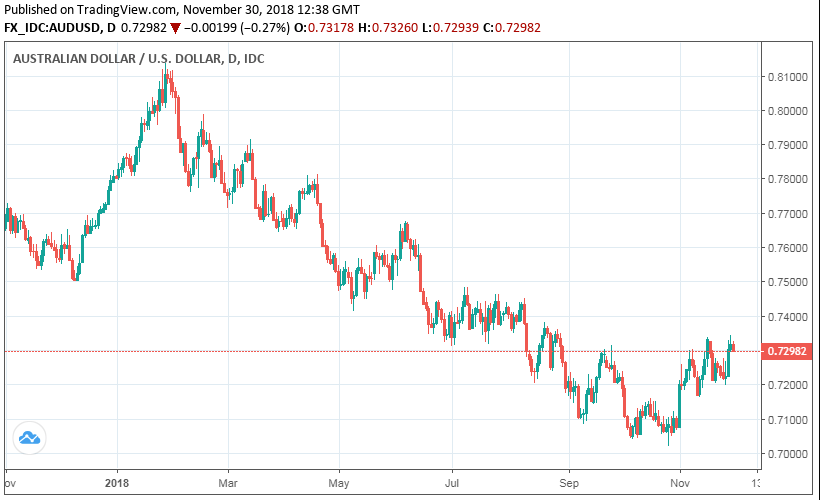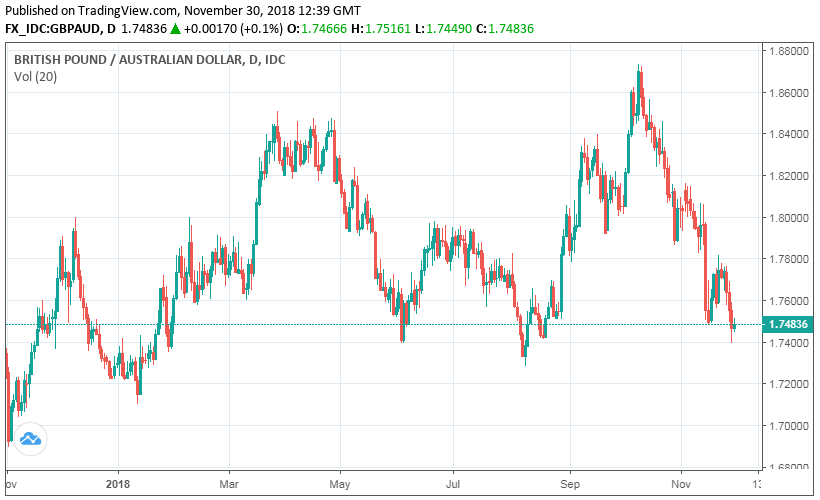The Australian Dollar Slips ahead of Big Test Match in Buenos Aries
- Written by: James Skinner

© GovernmentZA, image Reproduced Under CC Licensing
- AUD eases lower ahead of crunch Xi-Trump G20 meeting.
- "Trade war" detente is essential for continued AUD gains.
- But losses to be limited if no agreement in Buenos Aries.
The Australian Dollar slipped Friday ahead of a weekend gathering of G20 leaders in Buenos Aries, which could be pivotal to the trajectory of the currency heading into year-end.
G20 national leaders will meet in Argentina this weekend to discuss a range of issues although one subject on the agenda will dominated market commentary around the event.
President Donald Trump and President Xi Jingping are set to discuss the ongoing "trade war" between the world's two largest economies and markets have been hopeful the talks will lead to a detente in the tariff fight.
Whether or not they do is key to whether the commodity-backed and China-sensitive Australian Dollar will sustain its recent gains into year-end, or if it will retreat back toward earlier lows, as many forecasts suggest it might.
"While U.S. President Donald Trump stated he is very close to 'doing something' with China, the details could quickly lead to disappointment," warns Adam Myers, a currency strategist at Commonwealth Bank of Australia. "We expect that any relief rally in stocks and China-exposed currencies like AUD could be temporary if the agreement is short on detail".
The White House has imposed tariffs on $250 billion of China's annual exports to the U.S., citing "unfair trade practices", and is threatening to target another $267 billion if the nation's leadership does not change course.
Importantly, the 10% existing tariff rate is will automatically increase to 25% on January 01, 2019 unless President Donald Trump decides otherwise.
The Antipodean currency is substantially underwritten by a significant export trade with China and so it is sensitive to developments around commodity prices and changes in sentiment toward the world's second largest economy.
Chinese GDP growth slowed from an annualised pace of 6.6% in the second-qaurter of 2018 to 6.5% in the third, although other figures suggest the economy is under even more strain than the GDP data lets on.
Industrial production growth declined from 7.2% in February, the month before U.S. tariffs on Chinese steel and aluminium were announced, to just 5.7% in October. Fixed asset investment growth slowed from 7.9% to 5.7%.

Above: AUD/USD rate shown at daily intervals.
AUD/USD was quoted -0.30% lower at 0.7299 Friday and is still carrying a loss of -6.5% for 2018, even after rising more than 3% in the last month.
The Pound-to-Australian-Dollar rate was 0.09% higher at 1.2757 and is up 1.34% for the year, after declining by -2.4% during the last month.

Above: Pound-to-Australian-Dollar rate shown at daily intervals.
The so-called trade war explains much of the fall in the Australian Dollar during the second half of 2018, while a deterioration of the domestic interest rate outlook accounts for earlier underperformance.
"Concrete signs of easing U.S.-China trade tensions will trigger a broad-based rally in AUD," says Myers' colleague, Elias Haddad, in a note to clients.
With global economic growth under threat, and markets already jittery given the impact the Federal Reserve's interest rate policies are having further afield, investors are eager for an accord that will avert a further escalation in hostilities.
But even if a deal is struck at the G20, it won't necessarily be the end of the story because the "Made in China 2025" programme at the centre of U.S. allegations of intellectual property theft cannot be easily abandoned by Beijing.
"This backdrop suggests that currencies that have high trade exposure to China are vulnerable. Though USDCNH has been confined in a broad 6.90/7.00 range this month, we eventually look for this to push through the upper bound in the coming weeks and months. Both AUD and NZD have a high CNH beta," says Mazen Issa, a strategist at TD Securities.
China's Commerce Ministry blamed the U.S. last week for a fractious end to the Asia-Pacific Economic Cooperation summit, lowering expectations for an accord at the forthcoming G20 meeting.
The significance of the talks for the Aussie, as well as the fact that both parties appear entrenched in their respective positions, could explain why the currency weakened a touch during the London session Friday.
The outlook for the Australian Dollar once into 2019 will depend as much on the evolution of the international interest rate environment.
Advertisement
Bank-beating exchange rates. Get up to 5% more foreign exchange by using a specialist provider to get closer to the real market rate and avoid the gaping spreads charged by your bank when providing currency. Learn more here




